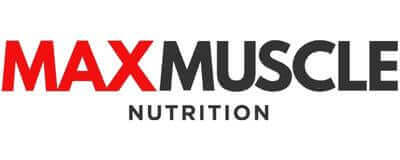What it is, why it happens, and how to work with your metabolism—not against it
You're doing everything “right”—eating clean, training hard, staying consistent. At first, the fat comes off fast. But then… nothing. The scale stalls. Progress pictures stop changing. Your energy tanks.
Welcome to metabolic adaptation.
It’s not failure—it’s biology. And the good news is, once you understand how it works, you can make smart moves to keep fat loss moving forward.
1 — What Is Metabolic Adaptation?

Metabolic adaptation (a.k.a. “adaptive thermogenesis”) is your body’s built-in survival mechanism. When you reduce calories and lose weight, your metabolism slows down to conserve energy and protect you from perceived starvation.
Metabolic adaptation delays time to reach weight loss goals
Your body becomes more efficient… and burns fewer calories doing the same things.
This includes drops in:
-
Basal metabolic rate (BMR)
-
Non-exercise activity thermogenesis (NEAT) — fidgeting, daily movement
-
Thermic effect of food (TEF) — fewer calories burned digesting less food
-
Exercise efficiency — you burn fewer calories doing the same workouts
2 — Why Fat Loss Slows Over Time

When you lose fat, your body weight decreases—and a smaller body burns fewer calories, even at rest. That’s expected.
But with metabolic adaptation, the slowdown is greater than expected, because of hormonal and neurological changes:
-
Leptin drops (reducing satiety signals)
-
Ghrelin increases (raising hunger) The effect of ghrelin on appetite
-
Thyroid hormones downregulate (lowering calorie burn)
-
Cortisol rises (increasing stress-related fat storage)
In other words, your body fights back—even when you're doing everything right.
3 — Signs You’re in a Metabolic Rut

-
You’re eating the same or less, but weight loss has stalled
-
You feel tired, cold, and unmotivated
-
You’re hungrier than usual, especially late at night
-
Your workouts feel harder, but you’re not getting stronger
-
Sleep and mood are off, even with good habits in place
If this sounds familiar, you’re not broken—you’re just in a classic adaptive phase.
4 — How to Work With Your Metabolism (Not Against It)
✅ Reassess Your Current Intake
You may need to adjust your calories downward, but not drastically. Use a calculator or InBody scan (available at Max Muscle Stone Mountain) to find your new maintenance level.
✅ Add a Refeed Day or Diet Break
Strategic increases in calories (especially from carbs) 1–2 times per week can boost leptin and help restore hormonal balance without derailing progress.
✅ Strength Train to Preserve Muscle
Resistance training helps maintain lean mass, which supports metabolic rate even as fat drops.
✅ Manage Stress & Sleep
High cortisol = low metabolism. Prioritize 7–9 hours of sleep and include recovery-focused practices like walking, stretching, or meditation.
✅ Use Smart Supplement Support
Ask our team at Max Muscle Stone Mountain for supplement guidance tailored to your phase. Examples may include:
-
Max Creatine – Maintains strength during a deficit
-
Pro BCAAs – Supports recovery when calories are lower
-
Metabolism Support Formulas – Help maintain thyroid health and energy
5 — Fat Loss Isn’t Linear (and That’s Okay)
Plateaus are part of the process. Your metabolism doesn’t like change—it prefers homeostasis. So every few pounds lost, your body adjusts.
The key? Adjust back. Give your system the right balance of challenge and recovery, and you’ll continue progressing—without burning out.
Ready to Reset Your Metabolism the Smart Way?
Visit Max Muscle Sports Nutrition – Stone Mountain, GA for:
-
A personalized InBody scan and macro review
-
Expert help building a reverse diet, refeed, or next phase strategy
-
Supplement stacks designed to support your metabolism—not fight it
Let’s break the plateau together.
About the Author
Mike Pringle, former pro football star and owner of Max Muscle Sports Nutrition – Stone Mountain, GA, has helped thousands of athletes and everyday fitness lovers overcome plateaus with expert strategy, recovery insights, and smart supplement support.

